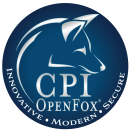
Finding daily inspiration for team engagement can be a challenging feat, especially in the modern, work-from-home world. It’s a stream of ebbs and flows that can strike in an instant and disappear just as fast. Work no longer fades away once we close our laptops at 5 p.m. and walk out the office doors – it’s sitting at our kitchen tables, on our phone while we brush our teeth, constantly at our fingertips. The threat of burnout is real, but it doesn’t have to be.
Keeping your team motivated is an essential component of success, and having a few foolproof strategies in your back pocket when morale is lagging can be a game changer for productivity. Providing real-time opportunities to build confidence and creating direct lines of open communication for honest feedback are just two of the techniques being implemented by Chicago tech companies in order to achieve bigger wins, whether it’s back in the office or remotely.
Built In Chicago caught up with two professionals looking beyond cookie-cutter solutions like pulse surveys and team-building exercises to give their employees a jolt of inspiration when they need it most.
Inspire11 is a digital and analytics consulting company helping clients navigate change and disruption. General Counsel Melissa Hirst said that one of her favorite methods of motivating her team is to encourage practicing a business proposition in front of a live audience to build confidence and gain new perspectives.
What’s a surprising or unique strategy you leverage to improve or bolster team engagement?
People feel engaged when they are interested in a project and challenged by a role, but sometimes I’ve found that team members are nervous about the additional responsibilities that can come with a more senior role or a more client-facing role – especially in terms of presentations. As a formal trial lawyer, I’m used to “mooting” arguments before I do them: practicing in front of a group of colleagues, getting feedback and figuring out how to improve my presentation. I always encourage our team to try things out live in front of at least one other person, whether it’s a presentation, a difficult conversation or a section of a key meeting.
“By reaching out to others, we get the benefit of perspectives other than our own.”
What makes this strategy so successful? What results have you seen?
In my experience, there are so many benefits to these dry runs. They give the speaker a chance to develop new skills and to gain confidence, of course. But there’s also an opportunity to get feedback from their colleagues in a no-pressure environment, which we at Inspire11 think is so critical! By reaching out to others, rather than being a lone wolf, we get the benefit of perspectives other than our own, which always improves the final product. And by testing the substance in advance, our team gets comfortable with the content and figures out what may not work before the key presentation or discussion.
Most recently, my mentee and I worked through a conversation with a client about the scope of a project and how best to handle its sprawl. She tried out some different ideas about how to present the issues to the client with the goal of getting additional staff onboard and a more defined scope. She was able to get buy-in on both goals, so that’s a huge win!
CPI, the OpenFox Company is a privately held corporation that develops software allowing law enforcement entities to share data quickly and do their jobs more efficiently. Software Engineering Director Noah Alcantara said he inspires team motivation through candid communication and holding himself accountable to guarantee a system of checks and balances.
What’s a surprising or unique strategy you leverage to improve or bolster team engagement?
There are several approaches the message switch team uses as its pillars of engagement and open communication: being candid and available for the team regardless of the time of day, holding myself to account first, proactive reporting, and roadmap/vision.
“Being candid and available up front allows open dialog at all times.”
What makes this strategy so successful? What results have you seen?
Being candid and available up front allows open dialog at all times. It helps bring items (good or need improvement) to light and allows us to make earlier adjustments. The sense of availability means that information is fresh and that it does not have to wait until the next hour or next day.
Holding myself accountable to the team allows checks and balances. It also helps lighten concerns with the team’s day-to-day responsibilities. Proactive reporting means being able to study the project and scope at hand and effectively determining a reasoned, actionable plan. The roadmap/vision defines engineering goals in relation to business direction. It provides a deeper understanding of the projects at hand and the goals it serves in growing the business and creating new product possibilities.
In 2020, the team successfully delivered on 76 projects. All the while, the team created a new product for the industry in six months’ time and successfully delivered it. We grew by almost double and reduced ramp-up time from one year to about four months.












